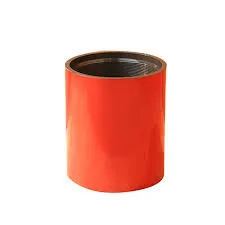- Afrikaans
- Albanian
- Amharic
- Arabic
- Armenian
- Azerbaijani
- Basque
- Belarusian
- Bengali
- Bosnian
- Bulgarian
- Catalan
- Cebuano
- Corsican
- Croatian
- Czech
- Danish
- Dutch
- English
- Esperanto
- Estonian
- Finnish
- French
- Frisian
- Galician
- Georgian
- German
- Greek
- Gujarati
- Haitian Creole
- hausa
- hawaiian
- Hebrew
- Hindi
- Miao
- Hungarian
- Icelandic
- igbo
- Indonesian
- irish
- Italian
- Japanese
- Javanese
- Kannada
- kazakh
- Khmer
- Rwandese
- Korean
- Kurdish
- Kyrgyz
- Lao
- Latin
- Latvian
- Lithuanian
- Luxembourgish
- Macedonian
- Malgashi
- Malay
- Malayalam
- Maltese
- Maori
- Marathi
- Mongolian
- Myanmar
- Nepali
- Norwegian
- Norwegian
- Occitan
- Pashto
- Persian
- Polish
- Portuguese
- Punjabi
- Romanian
- Russian
- Samoan
- Scottish Gaelic
- Serbian
- Sesotho
- Shona
- Sindhi
- Sinhala
- Slovak
- Slovenian
- Somali
- Spanish
- Sundanese
- Swahili
- Swedish
- Tagalog
- Tajik
- Tamil
- Tatar
- Telugu
- Thai
- Turkish
- Turkmen
- Ukrainian
- Urdu
- Uighur
- Uzbek
- Vietnamese
- Welsh
- Bantu
- Yiddish
- Yoruba
- Zulu
Jan . 30, 2025 05:59
Back to list
Caing Coupling
Tubing and casing play a critical role in the realm of oil and gas extraction. These essential components are designed to maintain well integrity, ensure safety, and maximize the efficiency of resource extraction. With the industry constantly evolving, acquiring an in-depth understanding of tubing and casing can significantly impact operational success.
The authority in best practices for handling tubing and casing is derived from adhering to API (American Petroleum Institute) standards. These guidelines serve as the benchmark for quality and safety across the globe. Compliance with these standards underscores a commitment to maintaining the highest levels of operational safety and efficiency. For instance, the API Specification 5CT sets forth requirements for casing and tubing, ensuring the products meet the industry standards for withstanding high pressures and corrosive environments. Trustworthiness in a product is established through rigorous testing and field validation. Industry-leading manufacturers perform extensive inspections, including non-destructive testing, to verify product reliability under extreme conditions. Real-world success stories of wells staying operational for decades without significant tubing failure underscore the importance of quality assurance processes. Operators often share testimonials of such long-term reliability, further affirming trust in established manufacturers and their products. By integrating experience, expertise, authoritativeness, and trustworthiness, companies involved in tubing and casing establish a solid foundation for operational excellence. It becomes evident that observing the minutiae—from material selection to regulatory compliance—influences not only the sustainability and safety of oil and gas operations, but also their profitability. Operators and engineers who continuously adapt and learn from field experiences, while adhering to industry standards, inevitably lead in the competitive landscape of resource extraction. Ultimately, the journey of mastering tubing and casing is an ongoing process of balancing innovation with tried-and-true practices. As new materials and technologies emerge, maintaining an open channel of communication with experts and peers ensures that knowledge is shared and best practices are consistently implemented. This holistic approach guarantees that tubing and casing not only protect the resource extraction process but elevate it to achieve new heights of efficiency and safety.


The authority in best practices for handling tubing and casing is derived from adhering to API (American Petroleum Institute) standards. These guidelines serve as the benchmark for quality and safety across the globe. Compliance with these standards underscores a commitment to maintaining the highest levels of operational safety and efficiency. For instance, the API Specification 5CT sets forth requirements for casing and tubing, ensuring the products meet the industry standards for withstanding high pressures and corrosive environments. Trustworthiness in a product is established through rigorous testing and field validation. Industry-leading manufacturers perform extensive inspections, including non-destructive testing, to verify product reliability under extreme conditions. Real-world success stories of wells staying operational for decades without significant tubing failure underscore the importance of quality assurance processes. Operators often share testimonials of such long-term reliability, further affirming trust in established manufacturers and their products. By integrating experience, expertise, authoritativeness, and trustworthiness, companies involved in tubing and casing establish a solid foundation for operational excellence. It becomes evident that observing the minutiae—from material selection to regulatory compliance—influences not only the sustainability and safety of oil and gas operations, but also their profitability. Operators and engineers who continuously adapt and learn from field experiences, while adhering to industry standards, inevitably lead in the competitive landscape of resource extraction. Ultimately, the journey of mastering tubing and casing is an ongoing process of balancing innovation with tried-and-true practices. As new materials and technologies emerge, maintaining an open channel of communication with experts and peers ensures that knowledge is shared and best practices are consistently implemented. This holistic approach guarantees that tubing and casing not only protect the resource extraction process but elevate it to achieve new heights of efficiency and safety.
Next:
Latest news
-
Tubing Pup Joints: Essential Components for Oil and Gas OperationsNewsJul.10,2025
-
Pup Joints: Essential Components for Reliable Drilling OperationsNewsJul.10,2025
-
Pipe Couplings: Connecting Your World EfficientlyNewsJul.10,2025
-
Mastering Oilfield Operations with Quality Tubing and CasingNewsJul.10,2025
-
High-Quality Casing Couplings for Every NeedNewsJul.10,2025
-
Boost Your Drilling Efficiency with Premium Crossover Tools & Seating NipplesNewsJul.10,2025
Related Products







